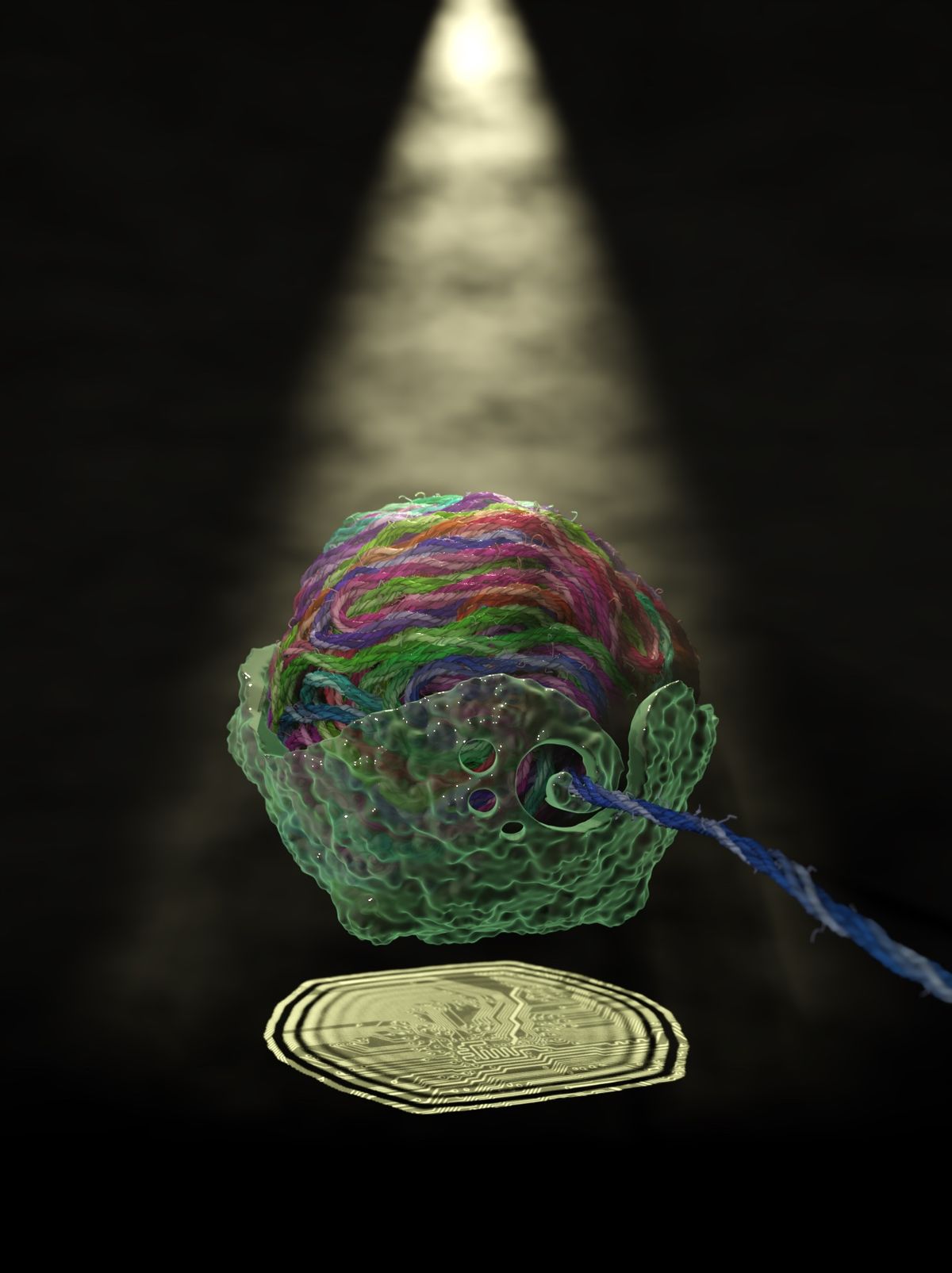A virus could also be microscopic, however it incorporates 1000’s of nucleic acid bases strategically packaged right into a protein shell. Figuring out how the virus organizes these huge data shops in a compact area is the important thing to understanding viral construction and designing higher defenses in opposition to pathogenic viruses.
Peering into the viral protein shell, or capsid, is difficult. Typical construction discerning strategies reminiscent of cryo-electron microscopy can’t seize the various configurations of genetic materials in every virus. Again in 2010, Aleksei Aksimentiev, a biophysicist on the College of Illinois Urbana-Champaign, had an thought for computationally simulating a virus’s construction. Nevertheless, computational strategies had been merely not refined sufficient on the time.
“It was all the time behind our minds, after which, we made a breakthrough when it comes to methodology,” Aksimentiev mentioned.
Now, 14 years later, in a research revealed in Nature, his staff reported utilizing a brand new computational method to simulate the individual atoms of a virus that’s full of nucleic acids.1 They used this technique to check the HK97 bacteriophage and proposed the primary construction for the virus.
A number of years in the past, Aksimentiev’s staff developed a way for mapping out advanced DNA configurations by computationally simulating them at multiple resolutions.2 They begin at a rough decision, like a fuzzy picture, after which on every iteration, they enhance the extent of element within the simulated DNA construction.

Aleksei Aksimentiev and his staff used highly effective computational simulations to determine how viruses pack giant quantities of DNA into their capsids.
Chris Maffeo/College of Illinois Urbana-Champaign
Of their new research, the researchers used this method to computationally mannequin the virus and its DNA throughout viral meeting. With prior experimental knowledge such because the construction of the capsid and the drive of the motor that masses DNA into the virus as a place to begin, they simulated the conduct of every of the 26 million atoms through the chaotic strategy of loading DNA into the capsid. This was no small job; every simulation took anyplace between three months and one 12 months to run, even on very highly effective computer systems.
In response to Eric May, a structural biologist on the College of Connecticut who was not concerned on this research, the simulations supplied unprecedented insights into the dynamics between the genome, the capsid, and different molecules within the virus which may be missed by experimental strategies that may solely get hold of the common construction throughout many particles. “This computational method does not have that type of limitation,” he mentioned. “We all know the protein parts already, however now seeing the genomic data in full atomic element may be very thrilling.”
For instance, the researchers predicted that DNA is packaged into the capsid by a way referred to as loop extrusion, the place proteins drive the DNA into hairpin configurations.3 Aksimentiev was shocked to see the range of genomic configurations produced by the simulations.
“We intuitively would assume every configuration might be completely different, however what was stunning to us was the size at which the constructions had been completely different,” Aksimentiev mentioned. “When you take a look at the person viral particles, they’re completely different by the worldwide configuration, which was launched by the numerous packaging course of.”
Matthias Wolf, a structural biologist on the Okinawa Institute of Science and Expertise who was not concerned on this research, mentioned that this addresses a protracted standing query about how viruses arrange their genomes. Nevertheless, he famous that the research lacked experimental validation of the anticipated constructions.
Aksimentiev thinks that they’ll enhance the simulation to account for extra bodily forces and be much less reliant on experimental enter knowledge. His group can also be working simulations of different viruses which are extra advanced. Could thinks that will probably be essential to use this mannequin to pathogenic viruses reminiscent of HIV and SARS-CoV-2, despite the fact that they’re more durable to mannequin due to their RNA genomes. “It will be fascinating to see [the researchers] attempt to transfer within the path of techniques of nice public well being significance,” he mentioned. “Additionally understanding the phases of viral an infection: how is the construction of a virus completely different when it enters the cell? How is the genome getting launched from a virus?”
Aksimentiev is optimistic that the simulations will prolong to extra advanced viruses, together with RNA viruses, by incorporating extra focused experimental knowledge. His eye can also be on an excellent loftier aim: simulating a complete cell. “It is most likely not coming quickly, however that is type of the Holy Grail,” he mentioned.
References
1. Coshic Okay, et al. The structure and physical properties of a packaged bacteriophage particle. Nature. 2024;627(8005):905-914.
2. Maffeo C, Aksimentiev A. MrDNA: A multi-resolution model for predicting the structure and dynamics of DNA systems. Nucleic Acids Res. 2020;48(9):5135–5146.
3. Ganji M, et al. Real-time imaging of DNA loop extrusion by condensin. Science. 2018;360(6384):102-105.




